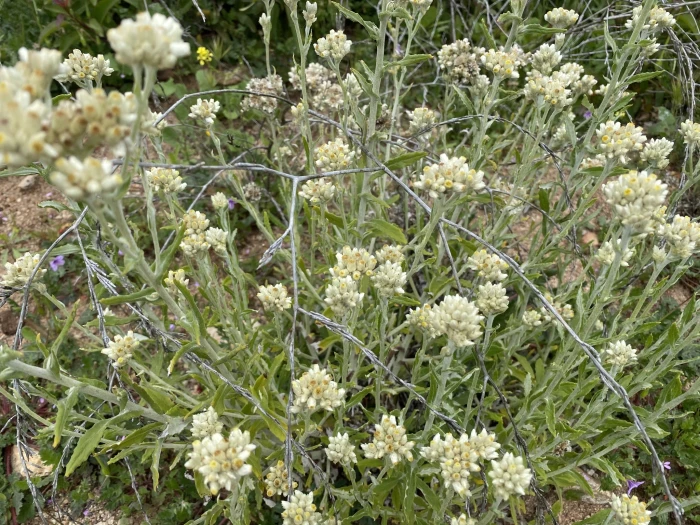Two-Color Rabbit-Tobacco
(Pseudognaphalium biolettii)
Two-Color Rabbit-Tobacco (Pseudognaphalium biolettii)
/
/

dennismudd
CC BY-SA 4.0
Image By:
dennismudd
Recorded By:
Copyright:
CC BY-SA 4.0
Copyright Notice:
Photo by: dennismudd | License Type: CC BY-SA 4.0 | License URL: http://creativecommons.org/licenses/by-sa/4.0/ | Rights Holder: dennismudd | Publisher: iNaturalist | Date Created: 2020-03-25T19:40:14Z |






















Estimated Native Range
Climate Requirements for Windsor, Colorado
| This Plant | Your Site | Plant Suitability for Your Location | ||
|---|---|---|---|---|
| • Precipitation | 2" - 47" | 15" | Your precipitation may be too high for this plant. | Too high |
| • High Temp. | 67°F - 108°F | 88°F | Your summer temperatures are normal for this plant. | Excellent |
| • Low Temp. | 26°F - 56°F | 13°F | Your winter temperatures may be too cold for this plant | Too cold |
This plant may not grow well at your location - your precipitation is too high.
Summary
Pseudognaphalium biolettii, commonly known as two-color rabbit-tobacco, is a perennial herb native to a variety of habitats including coastal sage scrub, chaparral, and dry slopes in western North America, particularly in southern California and Baja California. It typically grows up to 3 feet tall and has a branching form with narrow, gray-green leaves. The plant produces clusters of small, inconspicuous flowers that are white to pale yellow, which bloom from January to June and are a vital food source for the American Lady butterfly larvae. The foliage may emit a slight lemon fragrance when crushed.
Two-color rabbit-tobacco is valued for its drought tolerance and ability to thrive in poor, well-drained soils, making it a suitable choice for xeriscaping and naturalistic plantings in arid regions. It is also used for restoration projects and as a filler in mixed borders due to its low maintenance requirements. Full sun is preferred, and once established, it requires minimal supplemental watering. While generally free from serious pests and diseases, overwatering can lead to root rot.CC BY-SA 4.0
Two-color rabbit-tobacco is valued for its drought tolerance and ability to thrive in poor, well-drained soils, making it a suitable choice for xeriscaping and naturalistic plantings in arid regions. It is also used for restoration projects and as a filler in mixed borders due to its low maintenance requirements. Full sun is preferred, and once established, it requires minimal supplemental watering. While generally free from serious pests and diseases, overwatering can lead to root rot.CC BY-SA 4.0
Plant Description
- Plant Type: Shrub, Herb
- Height: 1-3 feet
- Width: 1-2 feet
- Growth Rate: Moderate
- Flower Color: N/A
- Flowering Season: Spring, Summer, Fall
- Leaf Retention: Deciduous
Growth Requirements
- Sun: Full Sun
- Water: Low
- Drainage: Medium, Fast
Common Uses
Butterfly Garden, Drought Tolerant, Low Maintenance
Natural Habitat
Coastal sage scrub, chaparral, and dry slopes in western North America
Other Names
Common Names: Bicolored Everlasting, Two-Color Rabbit-Tobacco, Twocolor Cudweed, Bicolored Rabbit-Tobacco
Scientific Names: Pseudognaphalium biolettii, Gnaphalium bicolor, Pseudognaphalium bicolor
GBIF Accepted Name: Pseudognaphalium biolettii